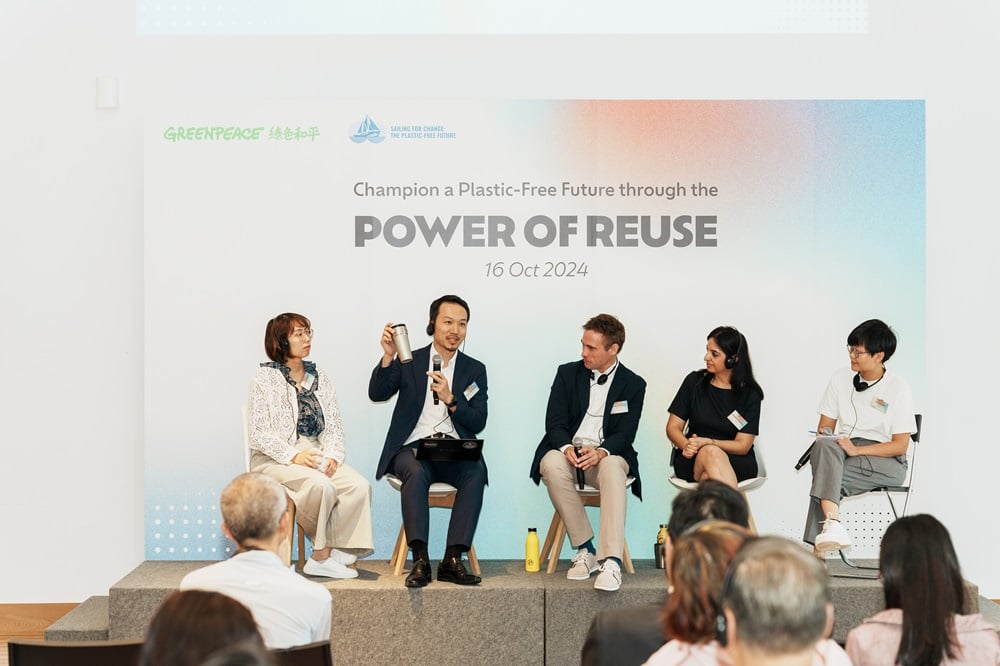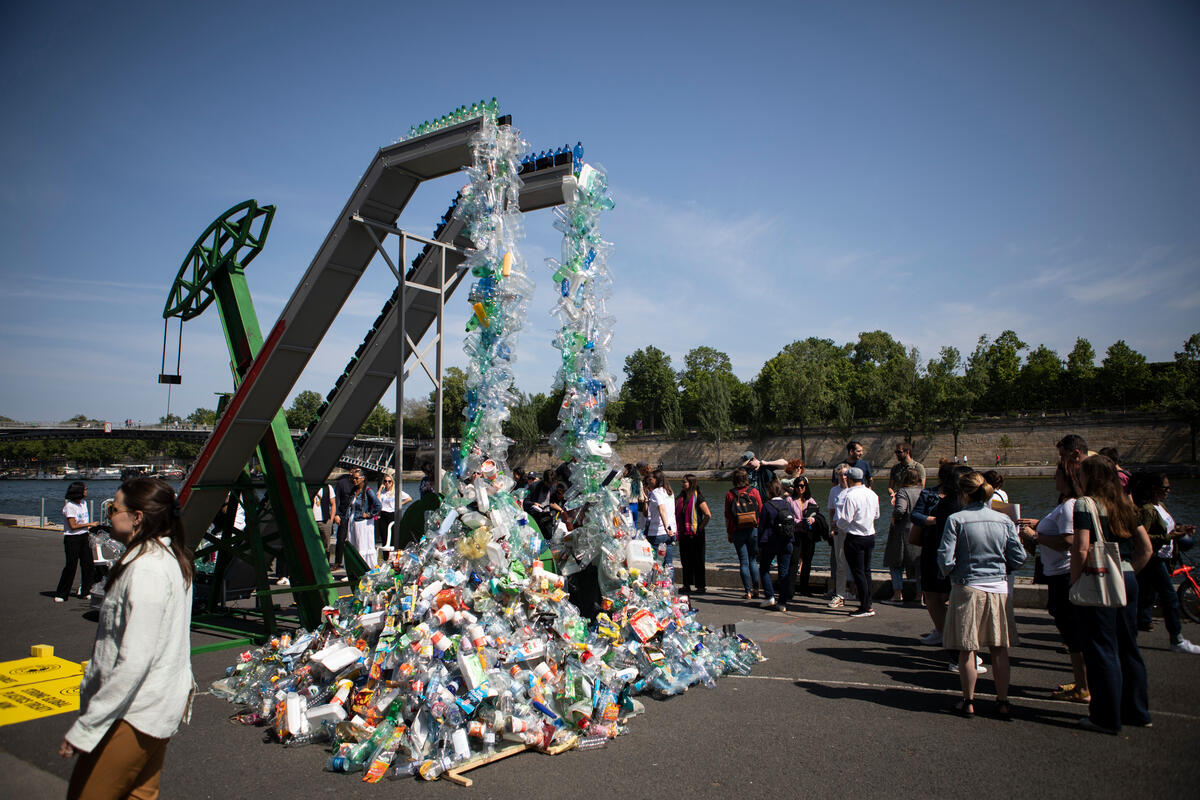Coca-Cola, the leading multinational beverage company that produces over 120 billion plastic bottles per year, announced on February 10 that they aim to make at least 25% of their product packaging reusable by 2030. Thank you for supporting us in pushing corporations to go plastic-free and now we have reached another waste reduction milestone!
We continue to aim high and advocate Coca-Cola to double its target to have 50% reusable packaging by 2030. In Hong Kong, Greenpeace campaigner Leanne Tam issued a letter to Swire Coca-Cola, urging the company to implement the plastic reduction commitment of their headquarters and make sure that Hong Kong is on par with the rest of the world.
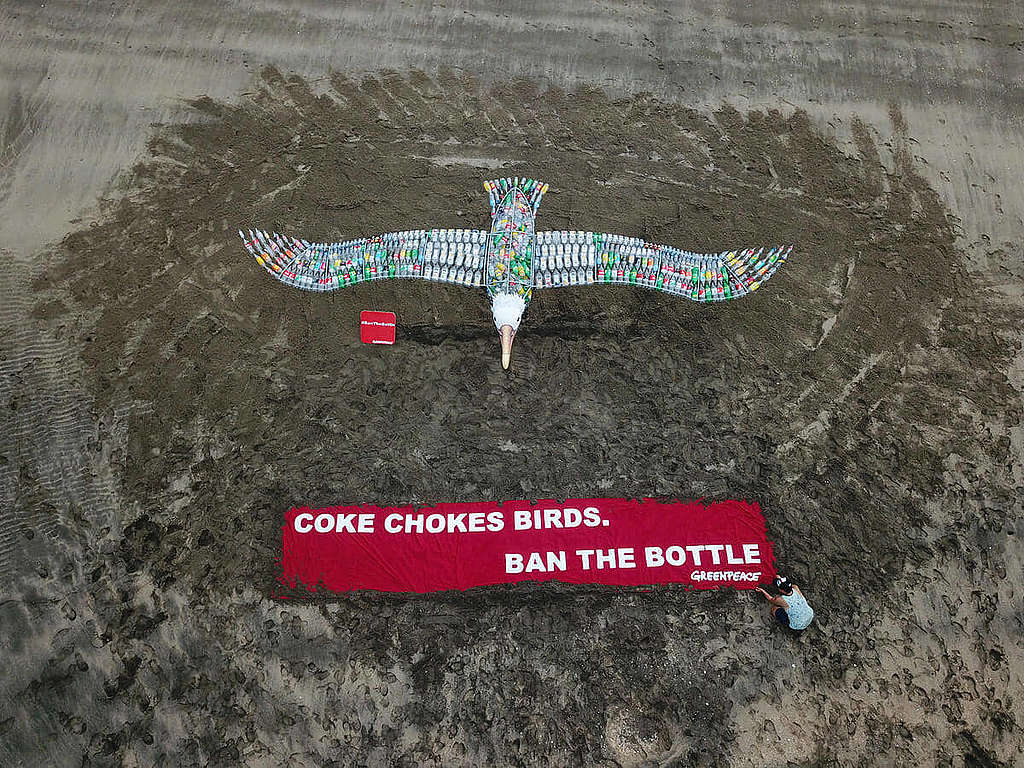
Leading in the other end: Coca-Cola 4-time world’s worst plastic polluter
According to Break Free From Plastic, a global plastic-free movement supported by Greenpeace and other organizations and individuals, the 2021 brand audit revealed that Coca-Cola was named, for the 4th consecutive year, the world’s worst corporate plastic polluter. Being the leading polluter, 19,826 pieces of Coca-Cola branded plastic waste was recorded in 2021, a number more than the next 2 top polluters – PepsiCo and Unilever combined.
Excessive use of plastic damages our oceans and it is also linked to the climate crisis. In a report released by Greenpeace USA in September 2021, it was revealed that 9 multinational consumer brands including Coca-Cola, PepsiCo and Nestlé have been using packaging manufactured by suppliers that use plastic resin supplied by well-known fossil fuel companies. More than 99% of plastics were made from fossil fuel, making use of or being dependent on single-use plastics is equivalent to supporting the fossil fuel industry and fueling them to intensify the climate crisis.
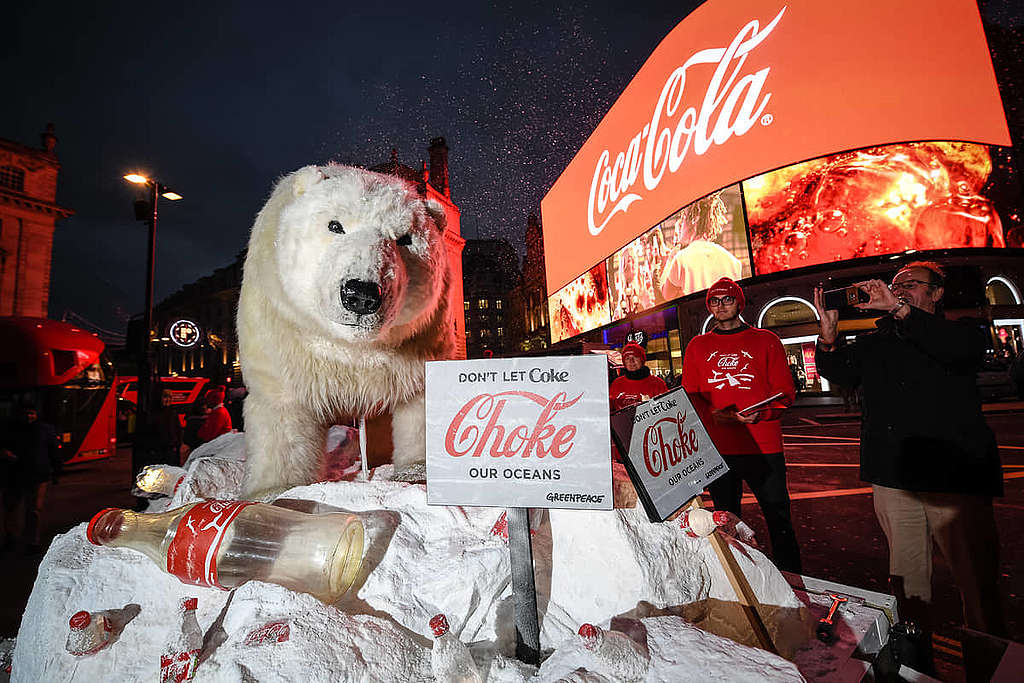
In recent years, Greenpeace launched different plastic-free campaigns across the globe targeting Coca-Cola, the world’s worst plastic polluter. In 2017, Greenpeace UK hijacked Coca-Cola’s Christmas advertisement, revealing the truth of excessive use of plastics behind the seemingly merry Christmas. In 2018, Greenpeace USA submitted a petition with 580 thousand signatures to Coca-Cola, urging the company to go plastic-free and bring in a reusable system. Coca-Cola branded waste were found all the time in our beach cleaning and auditing events in New Zealand, Scotland, Indonesia and South Korea, and also during Arctic Sunrise’s visit to the Great Pacific Garbage Patch.
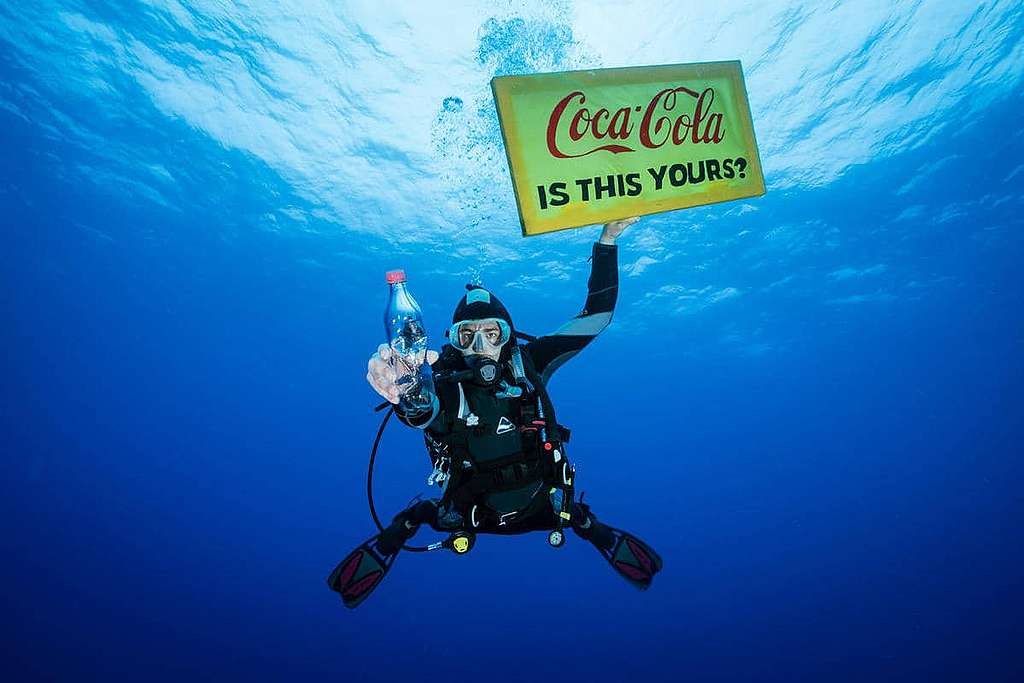
Lead the industry in the right direction: room for a more ambitious plan
Greenpeace regards Coca-Cola’s commitment to making 25% of their packaging reusable by 2030 as “a significant step to the right direction”. Being in the leading position in the industry, it is believed that Coca-Cola’s decision can help promote the trend of plastic reduction in the fast-moving consumer goods (FMCG) industry. However, being responsible for producing 120 billion plastic bottles a year, Coca-Cola should set a more ambitious goal and double their commitment to having 50% of their packaging reusable by 2030.
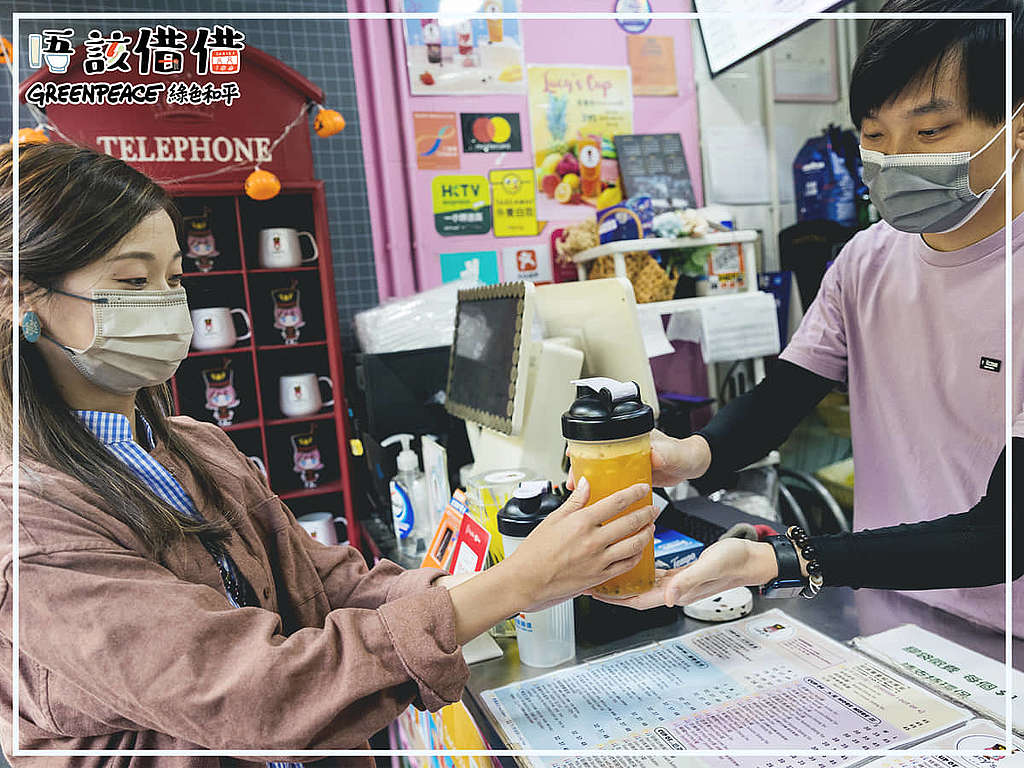
Greenpeace has proven that going plastic-free is feasible. The community experiment “For Rental Please” in Hong Kong that offered reusable tableware rental, and the “Plastic Free Alliance” campaign in Taiwan that provided reusable cup rental service are good examples that demonstrated feasible solutions for policies to be implemented and for a change in the business model. We appreciated that Swire Coca-Cola in Hong Kong has committed to installing 200 water refill stations in 2019. Coca-Cola should level up the marketing and publicity of their use of reusable containers and their package-free retail model as well as give regular updates.
Indeed, we are no strangers to “plastic-free coke”. The classic glass bottle is a sweet reminiscent of childhood to many. Bottle deposit and freestyle dispensers are nothing new. However, there is always room to improve, the Deposit Return System does not have to be limited to glass bottles, and the use of freestyle dispensers can be expanded to more restaurants as well as retail stores. Greenpeace urges Swire Coca-Cola to open up on its plans to reuse and reduce plastics. “We believe Swire Coca-Cola possesses the capacity and responsibility to follow up and implement the global reusable commitments in Hong Kong on par with the rest of the world.”
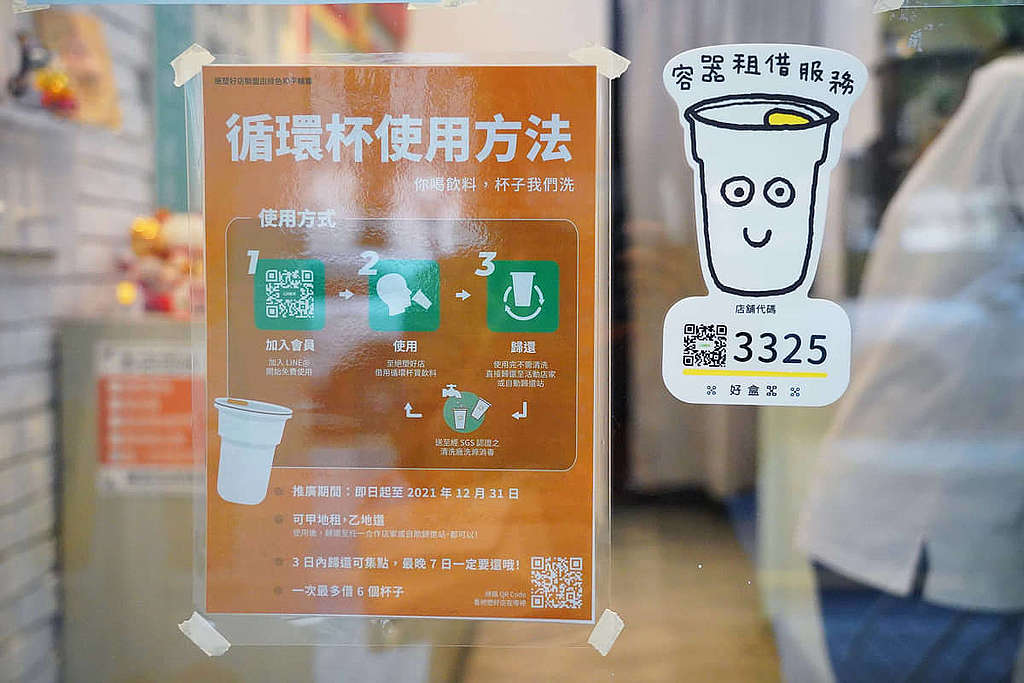
Another big step! UN to forge global plastic treaty
A business model of “refill and reuse” is globally agreed to be the solution to tackle plastic pollution. On March 2, The United Nations Environment Assembly (UNEA) agreed to forge the world’s first-ever internationally legally binding treaty to tackle plastic pollution by 2024, which will address the whole life cycle of plastic pollution in the environment, with negotiations opening later this year.
Our journey towards reaching this historical milestone on tackling plastic pollution was not easy. Greenpeace joined hands with Break Free From Plastic and gathered the force of public opinion on plastic pollution in the form of millions of signatures in a petition. And we hit the UNEA with a “Twitter storm” calling for representatives to pass on creating the global treaty. We will continue to monitor the progress and ensure that what is promised in the treaty is effective – implementing real and effective reuse and refill system and not muddling through using “biodegradable plastics” that are not compostable. We will also ensure the rights of workers, communities and countries affected by plastic pollution are protected.
When people speak out, big brands listen. If enough people call on big companies and governments to make changes, they can help put an end to the plastic pollution crisis. Appreciate your continuous support to Greenpeace so that we can continue our work in dealing with the plastic crisis, to restore our oceans and environment and pave the way for our next generation of a green future!

-1.jpg)
